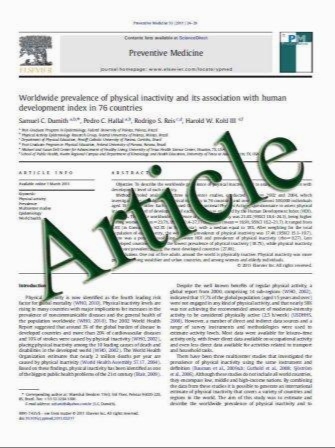Impact of hyperglycemia at admission in patients with acute ST-segment elevation myocardial infarction as assessed by contrast-enhanced MRI
- نوع فایل : کتاب
- زبان : انگلیسی
- مؤلف : Christoph J. Jensen Holger C. Eberle Kai Nassenstein Thomas Schlosser Mani Farazandeh Christoph K. Naber Georg V. Sabin Oliver Bruder
- چاپ و سال / کشور: 2011
Description
Background Blood glucose level at admission in ST-segment elevation myocardial infarction (STEMI) is a predictor of heart failure and mortality. This study was performed to investigate the impact of hyperglycemia at admission in non-diabetic patients on infarct size, microvascular obstruction, and long-term outcome using contrast- enhanced magnetic resonance imaging (CMR) in patients with acute STEMI. Methods One hundred and seven consecutive patients (84 males; mean age 59.4 years ± 11.3 years) with a first acute STEMI successfully treated by primary PCI were included. Admission hyperglycemia was defined as blood glucose above 7.8 mmol/l. CMR was performed 3.6 days ± 1.9 days after admission on a 1.5-tesla MR system. The imaging protocol included single-shot steadystate free precession (SSFP) cine sequences for assessing segmental and global left ventricular (LV) function and microvascular obstruction (MVO)/late gadolinium enhancement (LGE) imaging immediately and 10 min after the administration of 0.2 mmol gadodiamide/kg of body weight using an inversion-recovery SSFP (IR-SSFP) sequence. A receiver operating characteristics analysis was used to detect the best cut-off point of microvascular obstruction that predicted myocardial infarction and death during follow-up. Results Of 107 patients, 37 (35%) had hyperglycemia on admission. Compared to normoglycemic patients, patients with admission hyperglycemia had a lower LV ejection fraction (38.6 ± 13.7% vs. 47.5 ± 12.2%, p\0.001), greater ESV (88.8 ± 41.8 ml vs. 72.3 ml ± 35.1 ml, p = 0.01), greater infarct size (LGE% 21.1 ± 14.9% vs. 9.8 ± 8.7%, p\0.001), and greater MVO (MVO% 9.6 ± 9.9% vs. 2.5 ± 4.3%, p\0.001). Admission hyperglycemia was an independent predictor of the presence and extent of microvascular obstruction. Microvascular obstruction as a percentage of left ventricular mass was the only variable independently related to clinical outcome in a Cox proportional hazard model (Wald 18.78, HR 1.155, p\0.001). Conclusion Hyperglycemia at admission in STEMI patients who are successfully treated by PCI is independently associated with the presence and extent of microvascular obstruction on contrast-enhanced CMR. Thus, microvascular obstruction as assessed by CMR may be a mechanism that relates admission hyperglycemia in acute STEMI to worse outcome.
Clin Res Cardiol (2011) 100:649–659 DOI 10.1007/s00392-011-0290-7 Received: 6 September 2010 / Accepted: 26 January 2011 / Published online: 24 February 2011


